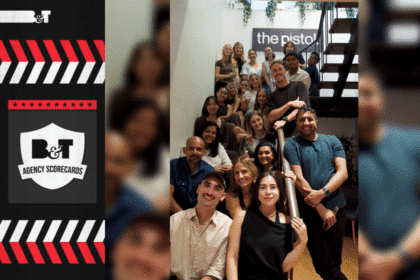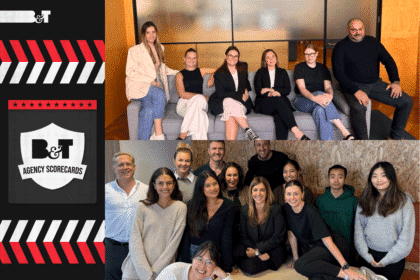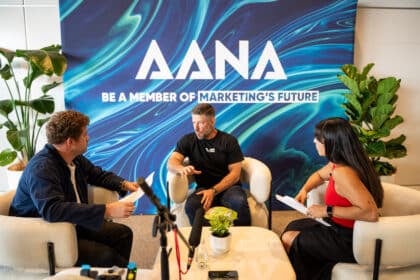As cost-of-living pressures, rising acquisition costs, and evolving consumer expectations intensify in 2025, loyalty programs must deliver real value. Technology continues to reshape how businesses connect with customers, and loyalty programs are no exception. Understanding that shift is one thing; knowing how to respond is another. Marketers that adapt to these demands, using data to sharpen focus and reward meaningfully, stand to outpace those that do not.
The recent Asia Pacific Loyalty Awards highlighted organisations tackling this challenge with success. In this piece, loyalty experts and several of the shortlisted finalists, including ALH Hotels Group, Qantas, and IMO Carwash share their experiences. These businesses have been recognised at the awards for their innovative approaches to customer loyalty.
Clear Vision for the Future
Finalist ALH Hotels was recognised for its loyalty program powered by Eagle Eye. According to Matthew Zimmerman, head of loyalty, Pub+, ALH Hotels, in the retail sector, a must-have when building a successful loyalty program is having a clear short-, medium- and long-term vision.

“Without these three phases clearly defined, someone else will define the vision for you. A well-integrated loyalty program can shift the conversation from, “Sales are down, let’s do 20 per cent off this weekend” to “Segment A was down 10 per cent, do we want to target them to bring them back, target another segment to bring back or do nothing?”. This conversation helps the business focus efforts and investment into the right initiatives to close the sales gap,” Zimmerman said.
Zimmerman believes the next phase of AI-powered personalisation and loyalty should enable marketers to set specific KPIs and have the personalisation tool recommend campaigns, provide a forecast, select members and even create copy and assets.
“This will enable the marketer to quickly implement campaigns to meet the defined KPIs, rather than waiting on all departments to complete their deliverable,” he added.
Customers, Buy-In and Momentum
Utadi Murphy, executive manager, product, digital and customer experience at Qantas, said one of the most important roles a loyalty program can help retail marketers with in the current environment is enhanced customer retention in a highly competitive market.

“With cost of living pressures and increasing international options for customers to choose from, providing additional and relevant value is really important to win them back again and again. This can be in the form of tangible and aspirational rewards or through greater utility and value to their everyday living. What is key is to focus on keeping both the experience and the proposition super simple for the customer,” Murphy said.
According to Murphy, when creating a new loyalty program, or revitalising an existing one, there are three must-haves: customer perspective, internal buy-in and a strong sense of momentum.
“The starting point needs to be your customers’ perspective on the “Value-Effort” equation. It’s easy to get caught up in the business reasons and economics of a loyalty program. However, at its foundation, it needs to hit the right balance of perceived Customer Value and effort required to obtain that value. Successful programs remove friction and maximise perceived benefit,” he added.
“The second is internal buy-in right through the business. In my experience, the programs that have strong front-line team buy-in really thrive because the customer’s interactions with the program are so positive.
“The third ‘must have’ is a strong sense of momentum. Customers who get initial benefit in any form and continue to engage are more likely to become stickier to the program and more valuable to the business”.
Moving forward in the age of AI, Murphy sees data-driven personalisation as continuing to be a differentiator for businesses with strong loyalty programs.
“Creating strong data foundations and using the right tools to increase relevance to your customers will drive greater conversion and increased stickiness,” he added. “What is clear is that this may look very different for every business and really needs to be closely integrated into your unique value proposition and supported by the right capabilities.”
Value in Cost of Living Crisis
Experts agree in 2025, we’re dealing with cost of living pressures and plenty of competition. Australians are watching their wallets and being mindful of discretionary spending. With budgets tight and so many options out there, a loyalty program needs to add value and provide meaningful rewards to keep spending worthwhile.
IMO Wash Club AU was also an award finalist, recognised for its loyalty program powered by Eagle Eye. David Trevan, managing director, IMO Car Wash Australasia, said a successful loyalty program hinges on simplicity and real value.

“Going all digital and getting rid of paper keeps things hassle-free while ensuring people know exactly what they’re getting: clear, achievable discounts and rewards without any fuss,” he said.
Data-Driven Customer Experiences in the Age of AI
Sarah Richardson, advisory board chair, Australian Loyalty Association, highlights that with the restrictions on several forms of marketing coming into effect, direct-to-consumer marketing, enabled by rich data made possible only by customers being loyalty program members, is more crucial than ever.

“In addition to this, Australian consumers are increasingly diverse, with rich transactional, demographic, geographic and psychographic loyalty data being crucial in identifying individual needs,” she said.
When it comes to loyalty in the age of AI, Richardson highlights the power of AI agents in driving value.
“Personalised AI agents available for high-value loyalty members will significantly enhance the experience within programs. Having an agent that can answer all your queries with relation to your membership as well as past purchase information will be a game changer for organisations who develop these capabilities early on,” Richardson added.
Attracting and Retaining Customers while ‘Marketing in the Moment’
Jonathan Reeve, vice president, APAC, Eagle Eye, said loyalty programs can help address several current challenges, including increasing costs of acquiring new customers, particularly through third-party channels like Facebook.

“Rising acquisition costs make retaining existing customers more important than ever and loyalty programs are a tool for keeping existing shoppers engaged and returning,” he added.
Reeve sees retail media and monetisation as another challenge. First-party data from loyalty programs allows retailers to power retail media networks, offering brands better ad targeting and closed-loop measurement, he said.
Another ingredient for a successful loyalty program is a proposition that “rewards the behaviour you seek”. For example, the design for a business focused on driving more visits may be fundamentally different to the design for a business that needs to increase average spend per visit, he said.
Moving forward, Reeve reveals how Eagle Eye sees the next phase of personalised marketing and loyalty to be ‘Marketing in the moment’. This involves engaging customers through personalised, context-aware strategies that respond to real-time data about the customer and their environment.
“AI-driven technologies can process customer data, purchase history, and contextual triggers in real time, allowing retailers to offer customised rewards, notifications, and promotions that resonate with the customer’s immediate needs and desires,” Reeve added.








